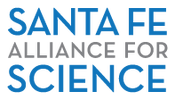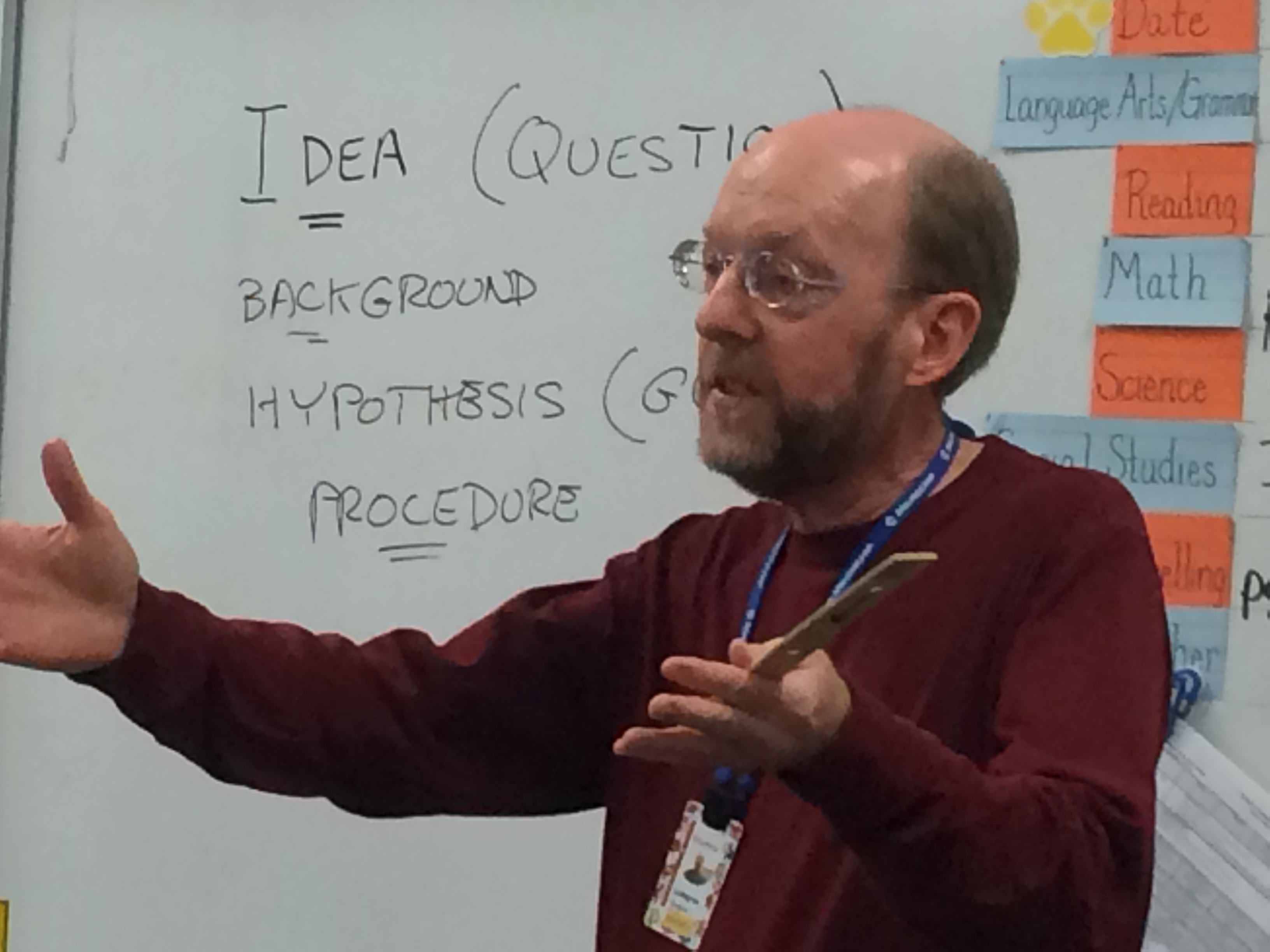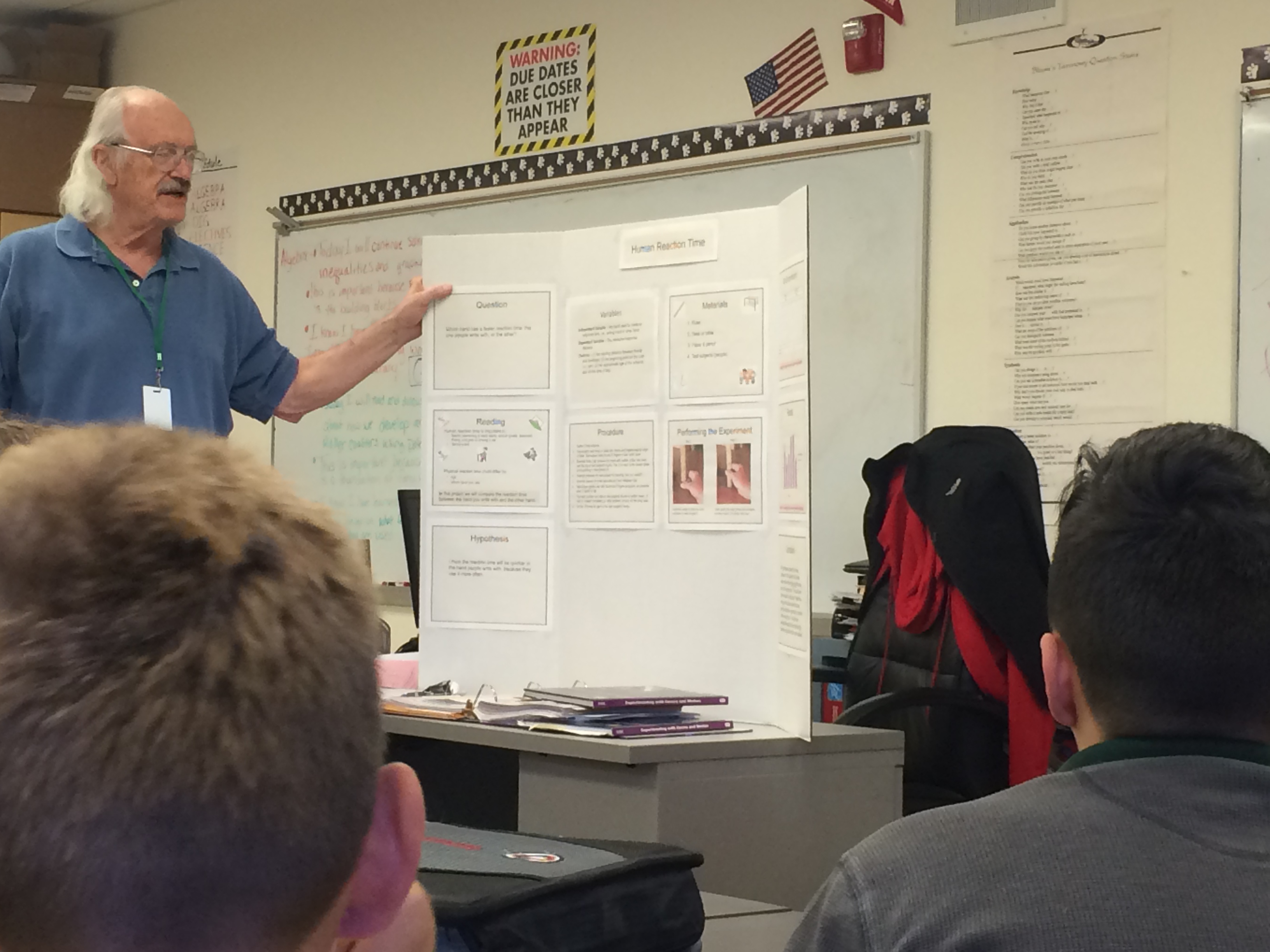STEM Fairs
|
From modest beginnings in 2007-2008 - with 8 participating schools and ~614 student projects - STEM Fairs in the Santa Fe Public Schools have grown to 20-25 schools and approximately 2000 student projects. The program is now a mainstay of science education for elementary and middle schools – students and teachers alike are learning the processes of inquiry-based scientific discovery. We are seeing true excitement on the faces of many students, and some first-class work in addition.
In the 2020-2021 school year, due to COVID-19, the Santa Fe Public Schools STEM Fair program went virtual. Instead of individual school STEM fairs, there was one big district fair. 495 grade 3-8 students from 17 SFPS schools had a chance to meet one-on-one with a scientist or STEM expert through virtual meeting rooms to discuss their STEM projects. In the 2021-2022 school year, SFAFS volunteers worked with SFPS STEM Coordinator Angela Walker and local STEM coordinators in 12 schools to PRODUCE in-person STEM Fairs with judges functioning remotely or in-person with extra precautions. 528 Projects were presented with 871 Students were interviewed. The District required that the District Wide Fair be completely remote; 25 judges interviewed 103 Students about 75 Projects. The grand total for the season was 603 projects presented by 974 students. |
|
New STEM Fair Project Videos
This series of videos can be used by students, teachers, parents or anyone who would like to know more about how to design and run a science or STEM experiment project.
- Session 1 - Getting Started on a Science Experiment Project.
- Session 2 - Researching your topic.
- Session 3 - Getting ready for the experiment.
- Session 4 - Making a Prediction and Testing It.
- Session 5 - Making a Data chart to Record Measurements.
- Session 6 - How to Graph Results.
- Session 7 - Results/Conclusions.
- Session 8 - Organizing Your Project.
Each of the following videos can be played directly on this page. Each can then be expanded to full page size by hovering at the bottom bar of the playing video, and clicking on its expand icon. In addition each playing video can be downloaded by clicking on its download icon.
|
|
|
|
|
|
|
|
|
|
|
|
Tips for Good STEM Fair ProjectsSteps for doing a STEM Fair project >
Choosing a project - potential project areas > Examples of STEM Fair projects > Characteristics of a good STEM Fair project (for grades 7 and above) > Questions judges may ask at a STEM Fair > Measuring tools to use in your STEM Fair project > What is an engineering project? > How to graph your results > Getting averages from your results > Growing plants for your STEM Fair project > |
STEM Fair 2021 Resources |
STEM Fair Judges Classroom VisitsSince 2013 our volunteer STEM Fair judges have visited classrooms to help students as they get ready for STEM Fair projects. Each year, we engage students in hands-on classroom experiments that model the steps of a successful STEM Fair project. In 2014 we talked about how to turn a lemon battery demonstration into a real experiment. A short version of that presentation is shown in the video at the top of this page. In 2015 students compared speeds of falling light and heavy objects. In 2016 students compared reaction times between dominant and non-dominant hands. After the suspension of in-school learning for 2020-2021, in fall of 2021 SFAFS restarted some in-classroom training sessions with students, to give them a better idea of how to design a good STEM Fair project. We are now focusing on the fourth and fifth grades, with separate classroom demonstrations for each. For the fourth grade, we have a simple experiment that measures momentum transfer and involves the students in the process. For the fifth grade, we have an experiment to measure the period of a pendulum. Doug Lonngren and Barb Bianchi developed these projects a few years ago, and they fit well with the school curriculum while demonstrating to the students how to do an experiment. Each classroom presentation includes a discussion of the important elements of a science experiment and how to interpret data.
The program began with a request from a single teacher that some judges come for one morning to talk to her school's nine 4th-6th grade classes about what's important in a STEM Fair project. It has grown from those short talks to approximately 200 students in 2013 to involving 2,500-3,500 students in a hands-on experiment in more than 100 classrooms each school year. The program is driven entirely by teachers' requests to the SFAFS. Most of our classroom visits take place between the start of the school year and the beginning of the science fair season, roughly from mid-September to the end of November. |


